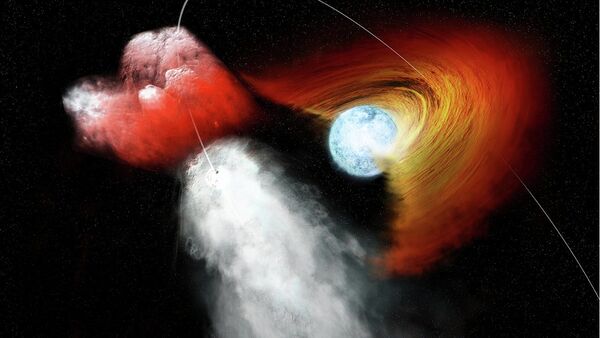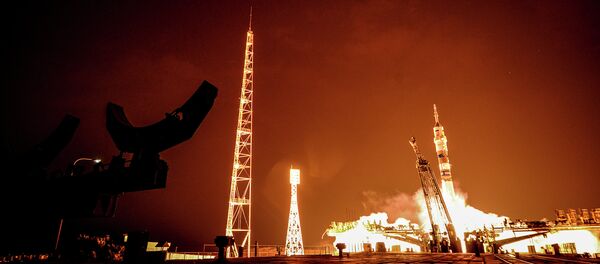The scientists believe the X-ray emission picked up by Chandra was produced by the collision of the wind from the pulsar with the clump of matter ejected from the star, which is 30 times bigger than our sun, and spinning off a disk of material as it rotates.
"This just shows how powerful the wind blasting off a pulsar can be," said co-author Jeremy Hare of George Washington University, whose study was published in the June 2015 issue of the Astrophysical Journal.
"The pulsar’s wind is so strong that it could ultimately eviscerate the entire disk around its companion star over time."
The researchers calculated that although the chunk of material lost by the star is a hundred times the size of our Solar System, the mass lost by the star is equivalent to all the water in the Earth's oceans.
The double star system observed by Chandra, called B1259, comprises the larger star, which the pulsar approaches every 41 months, and the pulsar, also known as a 'pulsating radio star.'
"After this clump of stellar material was knocked out, the pulsar’s wind appears to have accelerated it, almost as if it had a rocket attached," explained co-author of the study Oleg Kargaltsev of GWU.

A pulsar, a neutron star which rotates rapidly, is the small, highly dense remnant of a much larger star which underwent a supernova explosion. The matter of a neutron star, around 20km in diameter, is so dense that a teaspoonful of it would weigh as much as Mount Everest, about one billion metric tons.



